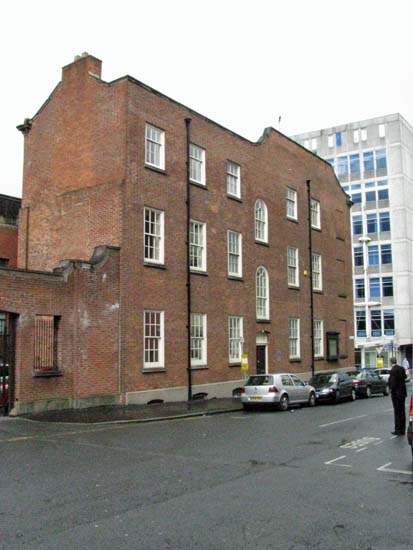|
Cobden House
Richard Cobden started
out in life in very modest circumstances. He was
born in 1804 near Midhurst in Sussex. He was one
11 children fathered by Richard Cobden a local
farmer. So poor was the family that Richard was
dispatched to live with an uncle in
Yorkshire. After an undistinguished
education Cobden worked as a travelling salesman before
going into the textile trade. It was this venture
that made his fortune and led to him living in a rather
affluent part of Manchester.
In time Cobden turned
his attention to politics and after pushing for an
elected town council in Manchester he became one of the
first elected aldermen. In the years that followed
he became the MP for Stockport and a prominent figure in
the movement to repeal the Corn Laws and it was Cobden
who recruited John Bright to speak at the rallies that
were held around the country. Along with Bright
Cobden also went on to campaign against the Crimean War,
something that brought derision on both of them and both
lost their seats in Parliament in 1857. By 1859
though he was once again an MP this time representing
Rochdale and he went on to represent the British
government in trade negotiations with France.
Richard Cobden died of bronchitis in 1865.
Cobden's home in Manchester stands on the corner of Byrom Street and Quay Street and it bears a blue plaque commemorating that fact.
Richard Cobden's House was
purchased in 1851 with money from a legacy left by John
Owens. Owens intended the legacy to fund the
establishment of a college for the education of
males on non-sectarian lines. The college was
set-up in Cobden House and called Owens College.  The college left Cobden
House in 1873 to move to a new home on Oxford Road where
it became the Victoria University. Eventually the
Victoria University became the University of Manchester.
In 1874 the site was
bought and converted into Manchester County Court.
The building sold for £13,000 and it opened as a court
house in 1878. The conversion involved the
erection of two court rooms at the rear of the
building. Cobden House itself was used for
Chambers hearings and administrative uses. It was during
this period that the original Ionic portico and exterior
staircase were replaced. Cobden House continued to
be Manchester's County Court building until 1990.
Today Cobden House is a barrister's chambers and it has
been completely refurbished to its Georgian splendour.
 A war memorial sits on the wall of the building on the Byrom Street side close to Quay Street.  
The Plaque below is also attached to the
Byron Street side of the building. |





